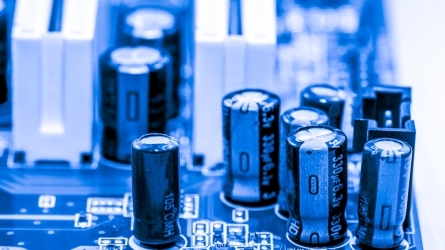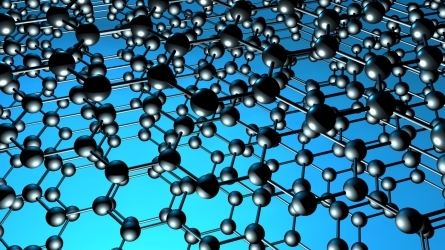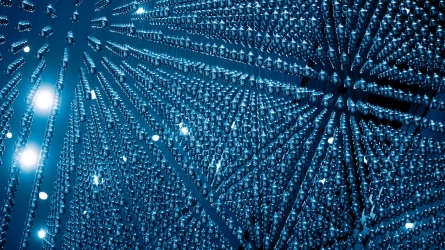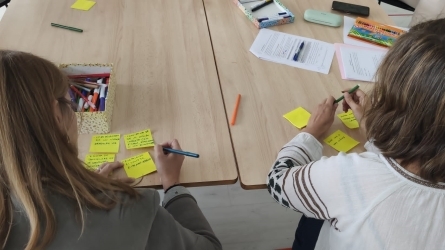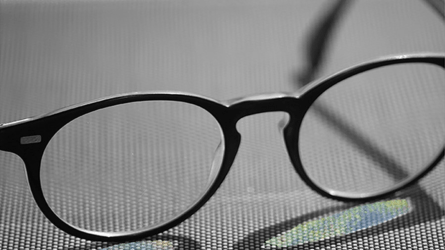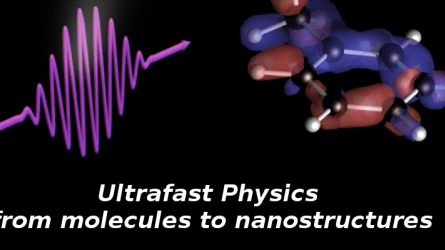
Ultrafast Physics from molecules to nanostructures
Description
The impressive progress in ultrafast laser technology, ranging from the femtosecond to the attosecond timescale and from the THz to the XUV frequency range, is making possible to probe real-time electronic and nuclear dynamics in atoms, molecules and solids[1]. Fundamental insight can be gained into the primary photoinduced processes in systems with growing level of complexity[2]. The capability of following and steering ultrafast dynamics has tremendous impact in a wide range of applications, from materials science[3] to life sciences.
Clearly, advances in theories and methods for modeling ultrafast processes inevitably require an intense exchange with the experimental community due to the complexity of the systems and of the measurements. In the last decade the effort in developing predictive and computationally feasible methods has virtually exploded. Ab initio approaches based on DFT and nonequilibrium Green’s function (NEGF)[4] have recently made contact with timeresolved experiments in 2D systems and nanostructures. Other ab initio methods based on wavefunctions (e.g., ADCn, CASPTn) or reduced quantities (e.g., TDDFT, NEGF) for modeling ultrafast processes enable to access the electron-nuclear subfemtosecond dynamics in molecules. Furthermore, accurate real-time numerical methods have been put forward for strongly correlated model systems (e.g., TD- DMFT and DMRG). This workshop will gather world-leading experts in theory and experiments, enabling a cross-fertilization which will enable to advance the state of the art in ab-initio methods. In fact, the rapid development of experimental techniques has not been followed by a simultaneous integration with the ab-initio computational community. The result is a scarce availability of numerical tools for crucial systems of technological or fundamental interest, e.g., biomolecules, large nanostructures and materials with technological application. One of the key challenges is therefore to extend the range of application of material science and chemistry codes to the study of out-of-equilibrium properties. To this purpose, it is crucial to let experimental, theoretical and computational scientists meet and debate on crucial questions like: how to extend the accuracy of ab-Initio methods out-of-equilibrium? How to efficiently benefit from the advances in computation facilities to simulate the nonequilibrium dynamics of complex materials? How to translate laser-pulse features into boundary conditions and suitable approximations for the computational tools? Can we devise a series of tools and procedures to provide to the community?
Objectives
This workshop aims at being a turning point in ultrafast computational scienc e, settling down crucial and yet unexplored directions to progress. We will compare different theoretical formulations of experimental outcomes, discuss their range of applicability as well as their physical and numerical limitations. We will also discuss for the various approaches how to include the missing physics and whether this inclusion is numerically feasible.
Activity directed to
- Professionals
Contributors
Directors

Angel Rubio
UPV/EHU
Speakers

Marco Bernardi
California Institute of Technology
Marco received his Ph.D. in Materials Science from MIT, where he worked with Prof. Jeff Grossman on novel materials and physical processes for solar energy conversion. He was a postdoc in the Physics Department at UC Berkeley, working with Prof. Steve Louie and Prof. Jeff Neaton on excited electrons in materials. His group at Caltech focuses on computing the dynamics of electrons in materials, with applications to electronics, optoelectronics, energy, quantum technologies and ultrafast science. Marco received the NSF CAREER Award in 2018, the AFOSR Young Investigator Award in 2017, the Psi-K Volker Heine Young Investigator Award for electronic structure calculations in 2015, and the Intel Ph.D. Fellowship from Intel in 2013, among other awards.

Jens Biegert
ICREA.ICFO.- The Institute of Photonics Sciences

Irene Burghardt
Goethe University

Andrea Cavalleri
Max Planck Institute for the Structure and Dynamics of Matter

Hannes Huebener
Max Planck Institute for the Structure and Dyamics of Matter

Aaron Kelly
Dalhousie University

Alfred Leitenstorfer
University of Konstanz

Fernando Martín García
Universidad Autónoma de Madrid, IMDEA Nanociencia & DIPC

Enrico Perfetto
Universita di Roma Tor Vergata

Thomas Pfeifer
Max-Planck Institute for Nuclear Physics

Walter Pfeiffer
UB

Akshay Rao
University of Cambridge

Erling Thyrhaug
Technical University of Munich

Marc Vrakking
Max Born Institute

Davide Sangalli
CNR-ISM, Division of Ultrafast Processes in Materials (FLASHit)

Christian Schaefer
Max Planck Institute for the Structure and Dynamics of Matter

Martin Schultze
Technical University Graz.Institue of Experimental Physics

Sangeeta Sharma
Max Born Institute

Emma Springate

Gianluca Stefanucci
Universita di Roma Tor Vergata
Registration fees
| REGISTRATION | Until 06-10-2019 |
|---|---|
| 0 EUR |
Venue
Miramar Palace
Pº de Miraconcha nº 48. Donostia / San Sebastián
Gipuzkoa
Miramar Palace
Pº de Miraconcha nº 48. Donostia / San Sebastián
Gipuzkoa




